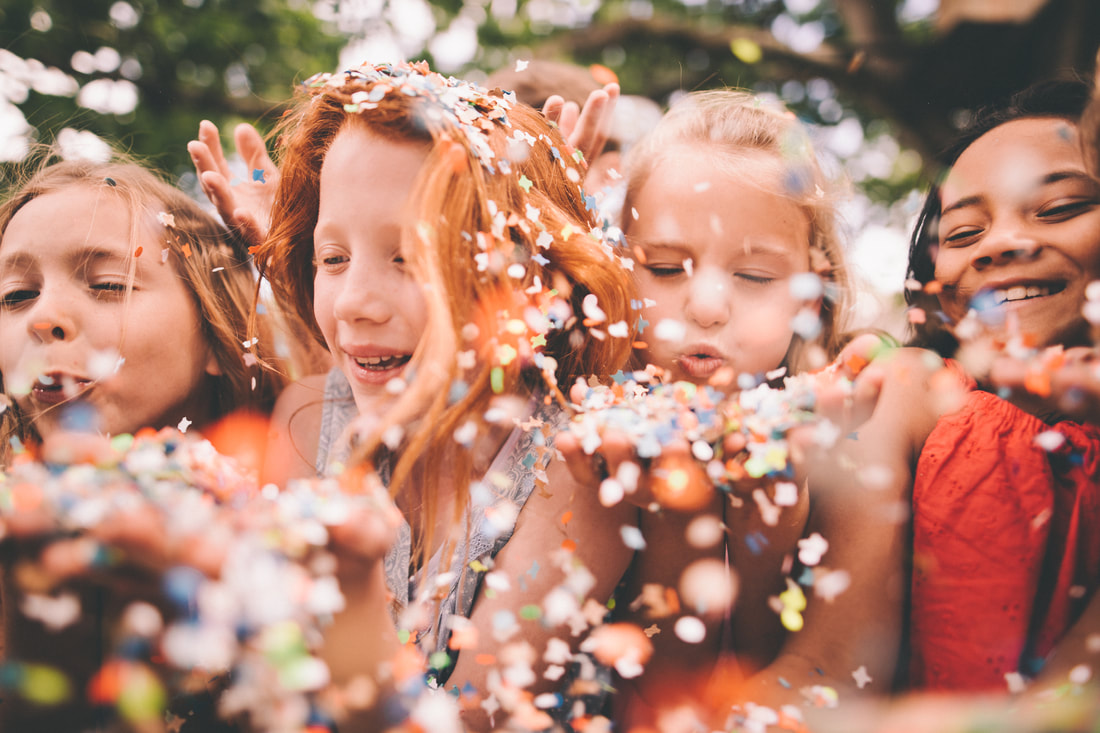|
Perhaps you have been lucky enough to have Dr. Katiusca Acosta as your pediatrician. You know she is super thorough, friendly, and an amazing doctor overall...but do you know she loves to do Zumba (and no, unfortunately we don’t have a video of this, but maybe next time)! She has a wide variety of interests and is passionate about many issues that drive her as a pediatrician every single day… and ultimately pushing her to make a positive impact in so many lives. SSP: Our SSP families would love to learn more about you, as you have made such a positive impact in so many of their lives. Can you tell us about where you grew up, and what led you to becoming a pediatrician? I was born in the beautiful Caribbean Island of the Dominican Republic. I lived on the island until I was 10 years old. Then we immigrated to the United States, to Sunset Park, Brooklyn. It all started in senior year of High School, I completed an internship at a local hospital and realized that not only were women underrepresented in medicine, but most importantly women of color. I was often used to translate difficult diagnoses to Spanish-speaking patients. Women of color are less likely to obtain a college education and thus pursue higher education. Factors such us low income, lack of mentors to keep them motivated as they are growing, and lack of support from families and/or becoming pregnant at a very young age can all influence a young woman’s decision to attend college and pursue higher education after college. Being a mentor or becoming someone that young children of color can look up to and relate to fueled my desire to become a doctor, specifically a pediatrician. SSP: Who would you say are your biggest inspirations and mentors? My parents, because they were able to raise three women and give them excellent education with minimal wage jobs. My mother was a teacher in the Dominican Republic. My father was a police officer. Once in the United States, they had to give up their respective careers to put food on the table for my sisters and me. They took minimum wage jobs and worked in factories to provide for us. They always encouraged us to do our best in school and pursue a college education. They wanted us to have all the opportunities that they couldn’t have. SSP: I understand you are very passionate about fitness, what is it that you enjoy and how does that influence you as a doctor? I enjoy running, high intensity interval training and Zumba as a means to stay fit. I try to motivate kids and young adults through my own experiences with health and fitness, especially those that are struggling with obesity. Due to the COVID -19 pandemic, there has been an increase in the number of obese children due to inactivity and confinement to their homes. During the child or teen’s wellness visit, I usually discuss how making small changes, such as drinking more water- can make a big difference. I ask parents to involve the entire family in making changes in their daily eating habits. A daily afternoon walk or trip to the park, even during the winter - to ride a bike or simply walk can have a great impact, not only physically but mentally. SSP: You are also a volunteer for Physicians for Human Rights - can you tell us about the organization, and how you are involved? I completed a training throughout the pandemic to help migrant children gain refugee status in the US by means of a physical exam and documenting any potential signs of physical abuse. It’s important that children that are being persecuted or abused in their countries get a second chance at leading a better life. Equally important is reuniting families and children that have been separated through unfortunate circumstances. I have the training but have not completed any cases yet due to COVID -19. SSP: What do you think is the most rewarding thing about being a pediatrician at SSP?
Just the daily interactions with the children, no matter how terrible your day is going, the children lift your spirit with their innocence and warm smiles. One hectic morning, I was involved in a minor car accident on my way to work. I was late and feeling so anxious after the incident. I had to see my first patient, a 4YO girl, and just coming into the room to her bright smile and her fun, cheerful personality made my day!
1 Comment
“Amaya, where are you”??? I yell, after searching for our 8 year old daughter in every nook and cranny of our house. “I’m in the garaaagggeee”!!!! I hear her scream back. I go out to see what she is up to, and of course she is digging through our recycling and collecting boxes upon boxes and other interesting papers and trash in her little arms. This is an almost daily occurrence in this household, and while my OCD self shudders at the thought of bringing garbage back INTO the house, I know she is about to spend hours creating the most random and unique objects and her imagination is soaring. “Mom, this box is going to be a volleyball court and this old string is going to be made into the net”! “Mom, I’m going to make a milk carton out of this piece of this colorful paper I found”! It’s endless. I see old cereal and shoe boxes, she sees an indoor miniature golf course and a giraffe mailbox. In celebration of earth day and nurturing our children’s beautiful and innovative minds, I’m going to share some of her creations, along with links and how-tos so you can try something similar at home! 1) Miniature Golf Course What you will need - these are suggestions, you really can use almost anything:
2) Candy Squishy (this is an Amaya original and a much more simple project) What you will need:
3) Guitar What you will need:
4) Giraffe Mailbox (another Amaya original) What you will need :
Before you start putting this together, make sure when putting together the giraffe both boxes have openings with lids facing bottom. Cut a rectangular hole towards the back of the larger shoe box (this is where the "mail" will go). Cut sides towards the front of small top box cover (this is so the giraffe can open its mouth)!
And to continue the fun, you can leave your child surprise notes or letters inside for them to find! 5) Egg Carton Collection Box (for jewelry or anything your little one likes to collect)! What you will need:
If you want to add flowers made from another egg crate, check this link out! 6) Fidget Spinner What you will need :
Here's a video tutorial as it explains the best and you can pause along the way. 6) Origami Milk Carton
What you need :
This is also too complicated to list the steps, check out this how-to video. During this past year, parents have struggled with how to manage the extra time at home with children, trying to find more productive and fun ways to keep kids engaged. Meet Kathryn Mora, who basically nailed it, and did what many of us dream of doing. She is a Park Slope mom who launched a beaded mask chain business with her 12 year old daughter and CEO, Layla. Kathryn was able to spend precious time creating a business with her girl, who in her words is the “real brains behind the company”! A truly inspiring story for us all. SSP: What inspired you to launch Mora Mora? Like many this year, we have been working to adapt to our new reality of keeping our children engaged and off screens. Between schooling online and the normal screen time struggle, craft-time became a huge part of our day to break them away from those screens. One of the projects we worked on was making mask chains just for ourselves. Friends and family saw what we’d created and wanted them too. It became a really special time, especially for me and my 12-year-old daughter Layla – who it’s getting harder and harder to find activities she is eager to do with me…those tween years are coming on hard! Requests for our mask chains started to expand beyond our immediate circles, so we decided to start selling them. For Layla this was especially a fun prospect because not only does she love beading, but she really loves the idea of having a business, so before we knew it - Mora Mora was launched. SSP: What makes your product so unique? Finding ways to involve and engage tweens and teens these days beyond Tik Tok is a real struggle. When you support Mora Mora – you’re not only making your masking easier and more stylish, but you are supporting the creativity of a child and her drive to learn about what it means to run a business. As well as supporting a young woman learning to be empowered by her own vision and dreams. SSP: Can you please tell me more about your CEO, Layla? Layla is a twelve-year old firecracker, and the real brains behind the company. I am solely her guide. When you give her a task to accomplish – she will take it beyond the finish line. But I’ll let Layla tell you a bit more about herself: “I love the Harry Potter series, doing art, writing and acting. I also aspire to be a lawyer because I love to debate and defend.” SSP: How are the different designs determined and how are they made? There is a lot of trial and error when we make our mask chains. We spend a lot of time beginning chains and then undoing them until we get something we love. Mostly we start by laying out a color palette. Then we play around with the pattern. We also think about how the colors and patterns will match with different masks. We started a collaboration with my friend and owner of LuluLuvs who makes gorgeous handmade hair accessories for kids with Liberty fabrics. She has been making face masks also with the same beautiful Liberty materials. Layla and I have been creating mask chains that match the different patterns and colors. Our line of chains for kids is also a big driver in some of our designs. We want to find fun combinations for kids that will encourage them to properly mask. Masking for children is not easy. Making sure those masks stay clean and don’t get lost is a real motivator in the designs we make with children in mind. SSP: Being that you just launched this past month, what are your plans for this year & will you be expanding your product line? It looks like we will be wearing masks for a while longer even with the roll out of vaccines. So, we will keep making mask chains! But all our chains can be used as eyeglass chains, necklaces and wrap bracelets. Layla has been layering them and using them as necklaces. Upon request, we can also add eyeglasses/sunglasses loops to any chain so they are very versatile! We create new chains all the time and our creativity and interest haven’t run out. We just bought some beads in fun bright colors for the Spring and Summer. One great thing about living in New York is the access to the amazing bead stores in the garment district. Many of these New York treasures have shut down over the past year but we are happy to be able to support the ones that are still around. We also have a friend who is scouting out and buying beads for us in the Southwest, so we are really excited to create some fun designs from those. SSP: It’s wonderful to see something creative and beautiful come out of this pandemic. What would your words of advice be to other creatives and entrepreneurs, who are considering starting a small business at this time?
I think it’s a great time to start a small business. The whole world is going through a sort of reset, and I think everyone has learned to step back and slow down this year. Now is the time to really explore all those creative ideas and passions that have always been put on the backburner because life has been so busy. Start small and start simple, but start! Another word from Layla: “Just create beautiful things and have fun!” SSP: Where can we purchase Mora Mora chains and do you have a social account we can follow to see more? You can purchase chains from our Instagram account @moramoranyc or online at www.shoplululuvs.com. More styles are created and added regularly. As we all know, Covid has totally ravaged businesses, and has taken an especially hard toll on fitness studios and gyms. One local favorite, Align Brooklyn, a yoga-based boutique fitness studio in South Slope, is one such place that was greatly impacted by the pandemic. We spoke to Pamela Brown, co-owner of the studio, to see how they are doing and how Align has been able to shift their business in this new reality. Most importantly, Pamela reminds us why self care is so important, especially now, and how Align can help you take the necessary steps to make this a priority. SSP: How has this pandemic affected your studio since it hit back in March of last year? To say that the pandemic affected us is truly an understatement. The pandemic was like getting hit by a tsunami. We saw the wave coming, but there was nothing we could do to get out of the way. The main part of our business has been group yoga and fitness classes. When we closed the studio last March, we never imagined that we would not be going back to the space or that group fitness classes would still be prohibited by the city almost a year later. SSP: How have you been able to pivot your business model, being that you couldn’t continue the in-person group classes that Align thrived on? It was immediately clear that we wanted to sustain our community and our business during the closure. The day after we closed, we started filming video content. We quickly set up an on demand site and offered Zoom classes. We knew that immunity was a key issue, and so Dr. Brown began offering weekly webinars on aspects of immunity and inflammation. We now have over 600 classes and a ton of educational content available online to members. But we also knew that offering classes and content would not be enough. We also needed to offer the support our community needed to continue to prioritize wellness during this difficult time. We created an app called Align Coach that provides daily reminders, educational content centered around our 5 pillars of wellness (nutrition, movement, sleep, mindset, environment) and an accountability tracking system. Dr. Brown checks in on clients several times a week and offers feedback, information and support. SSP: Can you share specifics on the kinds of online live classes, webinars and workshops you are currently offering, and the benefits they provide? We offer most of the same classes: yoga, mat Pilates, barre, functional fitness and recovery. The true highlight of our program are the wellness aspects. Classes and movement are essential, but so are other wellness habits like sleep, anti-inflammatory/pro-immunity eating, mindset and our environment. On most Wednesdays Dr. Brown offers a free wellness workshop where he quickly covers a topic. It’s just 30 minutes and is a perfect midweek lunch break! The live event is open to all for free and the recordings are available to members. All of our classes and workshops are designed to support wellness. For us wellness is not only the absence of disease, it is also a high quality of life as measured in both vitality and longevity. Everything we do at Align Brooklyn and inside The Aligned Life wellness membership is designed with this in mind. SSP: Wellness and self care, especially for folks like our SSP parents of young ones, is more urgent and necessary than ever before. How do the Align classes address the issues that so many are facing these days, like lack of proper sleep and unprecedented levels of stress and anxiety? There are two critical things to understand about wellness: wellness is a habit and in order to master the habit you have to track. With sleep and stress there is often a knowledge gap. We close that gap with educational content that takes less than 3 minutes to read, but provides links to deep dive into any topic of interest. By providing these daily educational reminders that come at the same time - 8am - each day via email and notification, already we are helping build a habit of thinking about self care. Next thing to understand and appreciate is that it will take 66 days to really get into the habit of something. A lot of people have heard that you just need to do something for 21 days to form a habit, but the latest research says it’s more like 66 days. Once we know this we can understand that without support - especially now - it’s unlikely that we will be able to gain consistency over wellness habits. The other important thing to know is that tracking in and of itself improves behavior. Not everyone likes tracking, but research shows that it is effective for everyone. You mention sleep - sleep is essential and there are some specific habits that can facilitate sleep. All of our memberships start off with a wellness evaluation with Dr. Brown. It’s a confidential HIPAA compliant questionnaire that helps us identify what aspect of wellness that improving will offer the biggest gains. Stress, sleep, movement, nutrition and our environment are all overlapping. By identifying one thing to work on scientifically, we can be realistic and save clients time. From there, Dr. Brown customizes a program and makes recommendations. If the client provides raw data from 23andMe we can personalize even further. After the wellness evaluation, Dr. Brown follows up with all members - typically once a week - to see how they are doing and if anything needs to be tweaked. By offering access to tools from classes to tracking, and mixing that with support, we are seeing great results. SSP: What do you want to communicate to those of us that have neglected ourselves, and believe we don’t have the time (or energy) to commit? The pandemic is not likely to have a hard ending. If you’re waiting for Covid to be eradicated before taking wellness seriously, you’ll be waiting a long time and doing yourself a disservice. Hopefully, we will soon get the numbers down and eventually we won’t have to wear masks, but going back to “normal” life is a ways off, even with the best vaccine results. The pandemic has highlighted the importance of committing to wellness as a routine. Self care can’t just be a one off or weekend thing anymore. Although Covid is dangerous for everyone, the most serious illness is generally found in the elderly and folks with preventable chronic diseases - and I say this with the caveat that these are broad categories and we are still learning about other aspects of the illness. But, in any case we should all take much more seriously the need to maintain a low inflammatory lifestyle to have positive outcomes, if we do get Covid, but also to live our very best and most vital lives. There is truly only one way to do this - you have to take some time each day. You should also get support and have some expert guidance, so that you can use science to personalize your activities for your unique body and life. SSP: The South Slope neighborhood is looking forward to returning to your studio and feeling a sense of community there as they did for so many years. What does the future look like for Align, and what can we expect? We have some very exciting plans on the horizon! We are planning to reopen in a nearby space - just a couple of blocks away - that is 3 times the size and will offer outdoor options. It will be a state of the art facility that will be designed with the reality of this pandemic and future ones in mind. We will offer community workshops, classes - when safe, chiropractic, myofascial therapy, and some retail. We are hoping to be able to reopen in the spring! To help Align survive this challenging time, please consider supporting the Gym Mitigation and Survival Act. To learn more, go to https://www.alignbrooklyn.com/. Rewind to over a year before the pandemic. My sister Lana Vogestad mentioned that she was well on her way to creating an immersive online yoga and meditation platform, which would be heavily influenced by her love of art and most importantly her genuine passion for wanting to help others. Living in southern Maine, she was able to team up with the incredibly talented videographer Brett Wiese Saunders, and the end result, Yndi Yoga, is a deeply engaging yoga and meditation experience that offers us a much needed escape. With landscapes and soundscapes that transport us to beautiful places, she reminds us to breathe. Something we all need to do a little more of today. SSP: Can you tell us about how your life as an artist, yogi and teacher led you to the creation of YNDI? Yoga and art have been at the center of my life for over twenty years, and even though they have always influenced each other, YNDI has been the ultimate culmination of it all. It’s been so fulfilling to bring it all together and explore dissolving the boundary between yoga and art. The more you practice yoga, the more you notice how it impacts your life outside of the actual physical practice. It inevitably affects all areas of your life and how you connect to the world around you. It affects your relationships with others and with yourself, and teaches you many invaluable skills to improve your wellbeing. Yoga elevates consciousness, and art has the power to do that as well, and thus they both expand your horizon and introduce you to new territory to be experienced. For many years, I've been creating experiential art to take the viewer into the present moment using visuals, sound and a minimal aesthetic. Directly influenced by my own yoga practice, the work invites you to relish the present moment, stripping away distraction, just like a focused yoga or meditation practice. My teaching has been influenced by my art as well, taking what I’ve learned about valuing the importance of authenticity, making deliberate decisions with the actual led practice, the physical space and the sound, so it all enhances a healing and transformational experience for practitioners. YNDI is an all-encompassing multi-sensory experience with diverse powerful yoga classes and meditation with stunning cinematography and custom composed soundscapes, to connect you to something bigger. SSP: What kinds of classes can one find on YNDI, and are they appropriate for beginners as well as experienced folks? What about people with physical limitations? All of the YNDI experiences are accessible, powerful and transformational. There’s a diverse selection of yoga classes rooted in different disciplines, including therapeutic Hot Yoga, express classes when you’re short on time, and classes tailored for newer students, students with injuries or just looking for a slower paced practice, in addition to a great selection of challenging classes for more seasoned practitioners. A Fundamental tutorial is available as well with in-depth alignment instruction covering the key postures and how to modify them, which can be integrated into any of the yoga classes. On YNDI Yoga there’s also guided meditations including Yoga Nidra, which is a magical yogic sleep for deep rest. As an YNDI member has shared, “YNDI is just as beautiful to watch as the practice is to follow”, and the custom soundscapes by Dj. Inc in Atlanta and Mikael Lind in Iceland perfectly compliment each experience. SSP: I understand you also offer live YNDI classes? What kind of classes are these and how often are they held? Even though it’s virtual, the livestream classes are a great opportunity to feel community and we have members from around the world who join, so it’s really fun. I teach an hour livestream yoga class every Thursday at noon and also offer special livestream events collaborating with composers and musicians, including our amazing YNDI DJ in Atlanta, Dj.Inc, who spins live from his turntables while I teach. It’s also been fun to lead family yoga livestream and have my niece Amaya, a former patient of South Slope Pediatrics, assist me from NY! SSP: The visuals and landscapes featured in your classes are breathtaking. Can you tell us more about how the cinematography and environments we are transported to in class adds value to the experience? We’ve created a world that people can retreat to from the comfort of their home and travel through beautiful landscapes and soundscapes to connect with more peace. The visuals and sound all work together in enhancing a truly transformational experience during a powerful yoga practice or guided meditation. The cinematography is stunning with beautiful imagery that eliminates distraction and contributes to a profound awakening experience. The filmmaker I’ve been working with, Brett Wiese Saunders, is an award winning documentary filmmaker and has such an innate artistic sensibility infusing magic into each video. The cinematography and environments are a tremendous part of the YNDI experience. SSP: This pandemic has taken an incredible toll on parents' wellness, specifically for parents of young ones. How does your platform help address those of us trying to finally prioritize our health in 2021, and offer flexibility at the same time? This has been such a challenging time for parents, so first off, parents need to pat themselves on the back at the end of the day for simply surviving. It’s impossible to get everything done and I know this having a six year old myself. Yoga and meditation have helped me enormously during this time! If you can give yourself just a few minutes in the day to simply be with yourself, your breath and turn the chatter of your mind off, you end up giving yourself so much more time and feel revitalized. YNDI is a unique platform with how it’s multi-sensory with captivating music, beautiful cinematography and professionally recorded voiceovers with clear instruction. YNDI offers short 5 minute meditations to 90 minute transformative yoga practices. There are different length classes to suit your schedule. For example, a busy parent can set their alarm just a little bit earlier, roll right out of bed and fit in a fulfilling practice in as little as 40 minutes before the day starts. YNDI makes it easy, you just need to press play and you’ll be engaged. It’s amazing how focusing on your breath and connecting with your body can improve your mental state. Petty worries dissolve and positivity grows. You’re more present and happy which you deserve as well as your loved ones. For more information, go to www.yndiyoga.com,
In this amazing community of South Slope Pediatrics families, we are honored to know so many who are accomplished in the arts and performance. One such SSP mother is Dava Krause, a stand-up comedian and writer who speaks of the raw truths of motherhood, including the shift and loss of identity.
SSP: Your list of accomplishments as a comedian is expansive, from writing to producing, to voice over work, to stand up, musical comedy, and acting as a regular in TV shows. How do you balance all of this and being a mom to 2 young children? When I first had my daughter Delaney I definitely went into shock at the lack of time that I had. I formed a writing group immediately through Park Slope Parents and 10 weeks postpartum began meeting regularly with a group of four or five other parents who are also trying to carve out time to write stuff. Once my daughter was sort of sleeping through the night and my body realized I wasn’t getting up every 3 hours with her (around two years old), I started to do comedy again at night but then I was trying to get pregnant again...suffered two miscarriages and it really set me back emotionally. It was hard for me to give myself permission to take that time to heal before I forced myself to go back out again. And then I sort of realized that for the time being, I would need to focus on my writing and put performing aside for a bit. And that was hard for me to live with. SSP: What is like being a mom in comedy? Right now? It’s great. A lot of my contemporaries who have decided to have kids realize that motherhood is an important part of their identity and talk about it in their act. I feel for a long time that women in any field had to hide the fact that they were moms or at least keep it separate from their professional lives. Or it was an unspoken rule that if you were a professional and wanted to have kids that it was *fine* but it should NEVER get in the way of doing your job. Or if it did get in the way that it would make you a less serious professional. Or people just assumed they knew you had kids that you weren’t as ‘dedicated’ to your job, which is garbage - especially for me who went to an all girls school, which was very pro-women in the workplace and that sort of feminism that's all about ‘we can do whatever men can do’. But I think with the pandemic and lots of people working from home, that there’s going to be a huge shift - or hopefully there will be a shift - in the way people view ‘working’ in this country. Who you are at home and who you are at work both exist within a person simultaneously, and it’s hard to split those two identities up in regular times - but especially when your kids are sitting next to you on a zoom call. Hopefully people start to understand that just because you’re a parent and you prioritize time with your family that it doesn’t mean you’re going to do a job any less efficiently than someone who doesn't have kids. In fact, working parents are the most efficient people I know. When you have an hour to get something done you put your head down and you do it. If you have two hours to do the same task there’s a lot more time to d*ck around. SSP: Who are the women or men in comedy or in life who inspired and influenced you? My peers. When I first started out in comedy in Los Angeles there’s a group of us ladies that would get together and do open mics every single night. It’s the same thing as when I formed that writing group when my older daughter was first born. Those are the folks that were doing the work just like I was while trying to be a parent. That group and my mom group and all the comedians and writers who I am privileged to call my friends - they were and are my inspiration. SSP: What would you say is your style of comedy, for those who are not familiar? Is the material fictional or more heavily based on truths? My comedy is heavily based on truths. It’s based on sarcasm and self deprecation. Always has, always will. SSP: Are many of your stories now shifting to realities of being a mom, in the pandemic? I haven’t created anything that has anything to do with the pandemic because quite frankly I’m living in a pandemic while also trying to guide my kids through a pandemic. That in itself is too much and to be honest I have been living every single day in crisis since March. But my most recent project(s) are all about being a mom because I’m still quite not over the complete and utter identity shift that happened when I became a mother almost 5 years ago... like I say in my pilot ‘Baby Steps’, motherhood did my identity what I did to my vagina. Ripped it to pieces and as I’m putting it back together again it’s not quite the same. Is that too raw for the South Slope Pediatrics audience? Baby Steps_Trailer from Dava Z on Vimeo. SSP: The loss of identity in motherhood is universal to all new moms. Can you tell us about your most recent project, “Baby Steps” and how you address that? I think the total utter destruction of my identity when I became a mother was a complete shock to me and I’m still working through it. ‘Baby Steps’ is all about who you think you’re going to be as a parent before you become a parent and how it all goes out the window after you become an actual parent. For example, the character I play, Nell, who is obviously based on me, believes that as soon as she has a kid she’s going to go right back to work and not miss a beat. And for some women that may be how it is and that’s 100% fine. But for me, like I said, I just couldn’t bring myself to do comedy anymore. And when your entire identity is built on the fact that you’re a career minded person and that you’re going to stop at nothing to become the best at what you do and then that desire is ripped from you completely - it can be devastating, disorienting and utterly depressing. And the impulse is to try to figure out what that means and who you’re going to be now. But Nell starts to figure out, like I did, that she’s not gonna know who she is right away and that she’s going to have to discover herself all over again in baby steps. And a large part of how she’s going to do that is with the support of this new mom group that she forms. Because it takes a village to raise a child and part of that is allowing parents time and room to grow into who they will become as well. And I mean all parents. Because I think for a long time society and gender norms have expected people who identify as men to not feel like they should want to spend time with their kids, or take time to settle into their new identity as parents as much as people who identify as women. But that’s not the case or at least I don’t think it should be. Becoming a parent is a major f**king thing whether you’re a man or a woman or identify as either or neither. Humans should have the time and space to bond with their babies and figure out who they will be as parents and people. SSP: What are you currently working on and how can our readers see more of your work? Right now I’m working on a podcast with a fellow mom comedian and writer. I can’t say too much about it but it’s a continuation of the themes that I’ve spoken about with a fun little twist. The best place to get news about this and other stuff would be on my Instagram : @davakrause. Thank you for having me! I love Dr Cao and Matteo and everyone at South Slope Pediatrics! You are part of my village and I am eternally grateful for all of you!
After working as a learning specialist for over a decade, Mara Koffman, SSP mother of two, launched Braintrust with her business partner Jen Mendelsohn. Braintrust is a platform that connects parents with certified teachers and specialists for private tutoring. She realized, after tutoring herself for so many years, that there was a real need for a space that could foster connections between parents and teachers. Braintrust empowers parents to choose the teacher who is the right fit for their child, and it also provides teachers with a meaningful platform to connect to those parents. This service is more useful now than ever before, as parents struggle to find additional support during the pandemic. We spoke to Mara to learn more in this month’s SSP interview.
SSP: How was Braintrust born and how did your life experiences lead you here?
I've worked as a learning specialist in NYC for over a decade. Prior to launching Braintrust, I worked in schools, tutored for other companies, tutored privately, and built a previous tutoring company of my own. Throughout all of those experiences, I've seen how difficult it can be for parents to connect with educators who have the training and expertise to provide students with effective learning support. Word of mouth recommendations often lead to dead ends, and agencies provide variable service at a premium price. That's why I created Braintrust. SSP: Please tell us about the services Braintrust provides, and it’s personalized approach to learning. How is this unique, and why is it important? Teachers make better tutors, and with Braintrust, parents can connect with certified educators and learning specialists for private tutoring. You can think of us like a Care.com for finding exceptional tutoring support. We help families match with teachers by area of expertise, experience with specific disabilities, availability, and price. In this way, we make it easier to connect with expert tutors for every learning need and budget. And with Braintrust, parents receive session reports and progress reports after each meeting so they can easily track gains and understand learning goals. In this way, students have a better learning experience and parents have a better service experience. SSP: How do you work to find the right match of student and tutor? We are the only tutoring platform designed by a learning specialist to think like a learning specialist. As a result, our unique algorithm, search filters, and other tools empower parents to connect with Braintrust educators who have the training and expertise to meet each child's unique learning needs. Plus, parents can schedule free Zoom interviews with tutors to ensure a perfect fit. And if a family needs more help finding the right match for their child, they can email us at [email protected] for additional support.
SSP: How are the tutors vetted?
To apply to tutor with Braintrust, educators identify what and whom they teach best, when and where they’d like to work, how much they charge per hour, and what specific training and certifications they have. Next, a member of the Braintrust team reviews each new teachers’ profile, including by checking their teaching and training certificates and evaluating their work experience before verifying the account. Last, tutors who meet our instructor standards and pass a criminal background check are approved to be featured in our marketplace. SSP: How have you seen the pandemic and hybrid or remote learning models create new challenges for children, specifically the younger age set? I think virtual classrooms have been particularly challenging for younger children and those who have learning or thinking differences. This is in large part because it is so difficult to create individualized learning experiences in online classes with such a wide range of students. While one-on-one and small group instruction work incredibly well online (I've been tutoring online since March with amazing results), teachers are trying to support up to 68 students at a time in some remote classrooms. As a result, it is nearly impossible to monitor engagement and progress as teachers otherwise would, and more students than ever are struggling as a result.
SSP: Working parents are struggling to provide the support our children need, now more than ever before. At what point do you recommend looking for additional tutoring services, and reaching out to Braintrust?
Parents have become total superheroes in this pandemic. I just want to say we all deserve a pat on the back for getting through this – it’s a lot! But if you are feeling overwhelmed, your efforts to support your child are leading to conflict in your relationship, or you see your kid struggling to keep up or make progress in class, a tutor can make a world of difference for the whole family. Because Braintrust educators understand learning and development, have training and experience with a wide range of curricula, and set their own prices, we have amazing tutors available for every need and budget. Our mission is to make it easier for families to connect with the support they need, while empowering our incredible educators to do what they do best! For some lucky parents, potty training comes naturally for the child. But for most of us, let’s be honest... it’s not easy at all and can take months of work (and frustration)! Bottom line is that it doesn’t happen overnight and it can be one of the most intimidating and difficult tasks for parents. Meet Ashley and Sean Wang, SSP parents of a young Milo who was the inspiration behind their new product, PottyPants. These intuitive crotchless underwear lets the child go to the bathroom without the need and fear of pulling their bottoms down in time, and provides a step between being naked and wearing underwear. We spoke to Ashley to learn more about their new product innovation. SSP: I think the name might give away what it does, but please tell us what exactly Potty Pants are, and why any parent in the process of trying to potty train their child may get very excited about your new product? PottyPants, as the name suggests, are intuitive crotchless potty training underwear designed by parents who understand how confusing and frustrating potty training a toddler can be. It was also inspired by what Chinese children use to potty train at a very young age(most of them under two years old). One of the most common potty training issues for toddlers (including our shy two-year-old) was the inability to pull down/up their underwear during potty training. The most popular potty training method is to train your toddler naked, but when we tried to train him naked in the house, we noticed he was uncomfortable not having the safety of a diaper anymore and started holding his pee and poop for hours until we put a diaper on him to go outside or before naptime. After we switched to training him with regular underwear, he struggled so much with getting his underwear down when going to the potty and ended up peeing in his underwear most of the time. As soon as we put Milo in PottyPants it all clicked for him. He felt the comfort and privacy that the diaper provided for him but was still able to use the big boy potty without struggling to pull his pants down. SSP: How was this idea born? The birth of PottyPants goes back to our son Milo's potty training journey in December 2019 when my husband and I decided to take the plunge into the unknown. In the week that we had time off from work, we spent the entire time chasing our naked son all over our Brooklyn apartment to try to get him to use the potty. We often spent up to an hour at a time with him in the bathroom, trying to coax him into peeing or pooping into the potty with no avail as we found out how stubborn he can be. In the end, he outwitted and outlasted us, and we decided to delay the potty training until "he is ready". Fast forward to the onset of the COVID lockdown, we were both at home, and we thought there was no better time to get him potty trained before starting pre-school in the fall. For almost two weeks, we tried the naked training, and with underwear, only to go through the same motion where he kept holding his pee and poop until one of us put a diaper on him. As a mom, it was heart wrenching to see your child holding his pee for the entire morning and not worry about his health. Just as we were about to give up, my husband suggested that he was potty trained at 15 mo old when he was a toddler in China and told me about these Chinese split crotch pants. He immediately made a prototype, and, to my surprise, within minutes of wearing them, he went to sit on the potty and peed for the first time on his own. That's when we knew we possibly had something that could help him and other children to potty train. SSP: What do you think makes Potty Pants so innovative, when looking at what is already on the market? How do they work exactly? When we looked at the products on the market to help with potty training, they were either diapers disguised as training underwear or cotton training pants where children first learned to pee in the pants to make them aware of the wetness of the pee. That did not make sense to us as we thought it would most likely create the impression it's ok to pee in your pants for some children. With the crotchless potty training underwear, it lets the child go on the potty without the fear of not being able to pull down the underwear in time. In addition, for those shy children who simply do not like to be trained naked, PottyPants offer the privacy and comfort of having underwear on during potty training at home. Lastly, the fabric is oh-so-soft! We sourced a bamboo & spandex blend so not only are they soft, stretchy, and quick-drying, but bamboo is one of the most sustainable fabrics in the market. SSP: I love how you have described these pants as an encouragement based method of training. Can you tell us more about that? From our perspective, potty training should be at your child's own pace and parents/caretakers should never punish them when they have an accident. In the end, potty training is not a three-day boot camp (at least for the majority of children) but a long journey, which often takes months before a child truly masters it. PottyPants serves as a tool that parents can use along with patience, commitment, and, most importantly, it's about making potty training a bonding experience with your child! We also provide quick videos and a free printable potty training chart on www.pottypants.com featuring our Potty Training mascot, Xander Panda! SSP: Do you have any other tips for parents who have been struggling with potty training and can't see the light at the end of the tunnel?
Don't give up and stick to a routine that works for your child but be flexible and look for other ways to help your child if a method did not work. Most children will have relapses where they will have accidents even when you think they are potty trained. A child as young as two and younger can be successfully potty trained, as millions of children in other countries have shown us. SSP: Since PottyPants' launch, how has the reception from parents and the public been? We really didn't know how American parents would respond to the concept of potty training with crotchless underwear at home. So far, the response has been so positive and encouraging. Parents are really connecting with the process and love the fit and fabric of PottyPants. We are thrilled to take away some of the stress of potty training from fellow parents. We are already getting several requests for expanded sizes and color options - stay tuned. :) SSP: What words of encouragement do you have for other parents in our community who are looking to follow their dreams and become entrepreneurs? I am still having a hard time calling myself an entrepreneur- we are just getting started! My advice to the parents out there during this challenging time is to make lemonade out of lemons. PottyPants was born out of desperation - every method we tried before just did not work. Instead of being frustrated and giving up, we created our own method. Despite being locked down at home during a global pandemic, we can all find hobbies or rediscover interests that inspire and motivate us and hopefully help discover the potential we have to help others. To learn more about PottyPants, go to https://www.pottypants.com/ For teens in particular, the Coronavirus pandemic is adding new stress, fear and uncertainty to their worlds. Many are having a tough time coping emotionally with the disrupted routines and are feeling more depressed, anxious, and angry. Some of these elevated emotions may be signs they need more support during this difficult time. We spoke to Erik Luna, a Park Slope father of two and a Licensed Clinical Social Worker, who speaks more about these challenges teenagers are facing, and what we can do as parents to best support and seek help if needed.
SSP: Can you please tell us about yourself and what therapy you provide? Do you have a certain approach to therapy that you follow? I was born and raised in San Francisco, and came to NY for graduate school in the late 1990’s. I’m a Licensed Clinical Social Worker, I graduated from NYU in 1999. For eleven years I provided therapy in public elementary, middle and high schools. I started a private practice part time in 2005, and since 2010 I have been doing full time private practice in Brooklyn Heights. It’s a blended approach of psychodynamic and CBT (Cognitive Behavioral Therapy) principles. CBT is very much about the here and now and being able to realize how your perspectives affect your feelings. CBT also involves monitoring and assessing your feelings/moods and provides tools and techniques for better management. There is not much of an emphasis on the past. A psychodynamic approach on the other hand is more about exploring the past to better understand the reasons for how we currently feel and behave. I always say if your house is on fire, you call the fire department to put out the fire (CBT). Then you need to call in the arson investigator to figure out what caused the fire in the first place to prevent the fire from reoccurring (Psychodynamic). This allows you to go back and look at the genesis and root causes for your feelings and behaviors. SSP: As we all know, the reality of COVID-19 is deeply affecting teens’ mental health. What kind of challenges are you seeing more of during this pandemic? First of all, I think everything is exasperated. If you had anxiety or depression before, that will be increased. For some adolescents that previously had these conditions well managed, it has now reached a point where it’s become a struggle again. For the general public, I think more people are feeling depressed and anxious since COVID started. I think much of it, in particular with adolescents, is that they are struggling with the notion of uncertainty. These are uncertain times. There is a natural rhythm to their year - school starts, and there are breaks, and then summer. Back in March that abruptly stopped. The normal rhythm has been thrown into chaos. Everything has a beginning, middle and an ending. We just don’t know where we are at right now. In the spring, many teens were counting on summer camps to open as an indication that we were returning to normal. For the most part, that didn’t happen. Now there is a lot of emphasis on returning to normal with the resumption of the school year. However, if you are in a blended model, there is a high level of uncertainty about what the school day will look like. Many teens think that it will look like it did before COVID. There will be a lot of shock when they realize they now need to wear masks and will be limited interacting with other peers. In many cases, they will no longer be able to move from class to class. I am worried that many teenagers will be disappointed when they realize this is the new normal for in-person education. Some private schools are even doing a tent system. The students are in tents set up outside with classes conducted under the tents. The more flexible teens are to the new normal, the less stressed they will be. Teens naturally have FOMO (the fear of missing out). FOMO is now less about feeling left out of activities with peers and more about missing out on where they feel they should be. I was talking to a college freshman and there is this notion of not getting the true college experience. Currently freshmen are often not able to eat in the dining hall. There are limits as to how many people can be in a dorm room and many classes are virtual. Normal ice breakers are not happening which makes meeting others hard. This is a very different experience than what they signed up for (and paid for). High school seniors are frustrated over missing prom and graduation – thinking this is not how senior year should be. I almost feel like adolescents are less worried about being sick and more worried about getting family members sick and really worried about the stigma of being sick. There is less worry about not being able to recover from the disease and more worry about passing COVID to family members. They are also concerned that they will be labeled as the “COVID kid.” They are terrified to think they could be the individual responsible for shutting down a school. SSP: What do you think are the main contributing factors most impacting this age set? Definitely the isolation. Developmentally teenagers are supposed to be socializing with their peers. They are at an age where they should be relying less on parents and more on their friends for emotional support. Now this is much less of an option. Not only are kids missing hanging out with friends in an unstructured way, they also have less structured activities with peers. Sports have significantly been hampered, there are not many camps, and not a lot of extracurricular activities are happening. There is also a narrowing of friends groups. Teenagers are mostly interacting with their core group and less with acquaintances. Their socializing options have greatly narrowed. Although Zoom and Facetime are helpful, it’s not a complete substitute for hanging out with friends in-person. I do think that kids are relying more on video platforms, which is understandable with less options, but it’s not the same as hanging out with your friends after school and on weekends. SSP: As parents, how do we best balance wanting to have our children reconnect with their peers socially and emotionally when they are feeling so very isolated, while deterring reckless behavior during COVID. What is the best approach? Kids cringe when I say this but I think partially supervised interactions is the answer. What that means is that if you have a yard, which many of us in NY don’t, inviting small groups of teenagers to hangout in the yard but in a manner that can be supervised from a distance. It doesn’t mean having the parents hang around with the group of teenagers, but rather having the parent be present in the background so the teens are gently reminded to follow safer guidelines. Some of the biggest concerns when teens hang out by themselves are they are naturally impulsive, more susceptible to peer pressure, and they just get so excited. They live in the moment! This makes socially distancing, wearing masks, and engaging in safer behaviors more difficult for them. Even if there is a prearranged social safety contract about how to be safe with their friends and they genuinely want to follow these rules, it’s so hard in the moment when they are with their friends. If you don’t have a yard, have a parent go to the park with the teens and stay an appropriate distance away. This way the teens are with their friends but there is also a quiet reminder that they do need to follow these socially distanced guidelines. It’s a fine line, it’s a dance – you don’t want to be in their face, they need their privacy, but usually it is not realistic to put forward these COVID safety guidelines and expect them to always follow it on their own. Some parents are doing socializing pods where they are able to contact other parents, get tested, and limit socializing with other people. Kids are able to be safer knowing these pods lower the risk of transmitting COVID. It’s all about finding lower risk versus higher risk activities. SSP: What warning signs should we be looking out for in our teens when they are feeling depressed? What should trigger us to seek professional help? I think when people think of depression they think of an individual being sad or melancholy. This is more true for adults. Depression in teens can manifest in different ways. They can be that way, sad and melancholic, however, there are many other emotional and behavioral changes associated with teen depression. Some of the emotional changes can be having diminished interest or a loss of interest in activities that they used to enjoy. Depressed teens can also have a difficult time motivating to participate in activities that used to be natural or easy for them to engage in, including academics, hanging out with friends and hobbies. Emotional outbursts can also be a sign of adolescent depression. Depressed teens can have big mood swings, increased tantrums, and increased outbursts of anger or sadness. Many people reach out to me saying “My teen is so angry”, but it ends up being a depressive component. I think if you asked the parent if their kid is depressed, they’d say oh no…but when you ask the parents if their teens are happy, they start to realize it may be more than just teen angst and a depressive component may be present. There are also behavioral concerns associated with depression. A big one is self harm, which can include cutting. Depressed teens can also have significant weight or sleep changes. They frequently isolate themselves, even if they want to see friends. They may want to reach out to a friend but lack the drive to do so. Their social motivation is gone. Other depressive behavioral concerns include alcohol and drug use and certainly suicidal ideation and suicide attempts. As far as when to seek professional help, kids are actually very willing and often recognize they want/need help. Sometimes just asking is a good first step. Often they say, “Yeah, I could use someone to talk to.” Recognizing the need for emergency help is critical for every parent to know. If you suspect that they are a danger to themselves or someone else, it can’t wait and needs to be addressed immediately. This includes immediately calling 911, contacting a physician, or going to the ER. If there is a previous relationship with a psychiatrist or therapist, reach out to them immediately. While seeking professional help may be able to wait a week or two, emergency help needs to be instant. It’s important to distinguish between the two. Depression and anxiety are treatable, and kids get better. I always feel that when someone seeks treatment, it’s the low point, but they are now seeking help to improve themselves. It’s amazing how much easier it can be tackling life’s obstacles without being clinically depressed or anxious. SSP: What can we do as parents to best help and support them during this time? One major way to help support children during this time is for parents to manage their own anxiety. Sometimes parents are struggling more than teens or struggling just as much. So it’s also important for parents to seek help and support for their own anxiety/depression. Parents are worried about getting sick themselves and worried about the health of their extended family. Parents are also worried about money and the uncertainty of their job. By getting the support for themselves, they are better prepared to be able to focus on their childrens’ needs. I also think it’s important to remind teenagers that they are not in this alone. I talk to teens who are caught up in missing their friends and missing other opportunities. I remind them that everyone is going through this to some extent. Most people are feeling the way they do to some degree. If there was ever a shared experience among us, this pandemic is truly it. What goes along with the uncertainty is the need to be flexible. I know I sound like a broken record but If teenagers can’t adjust to the reality of the new world, this experience is going to be very hard on them. If they can accept that maybe some activities will need to be modified due to COVID, it will be less stressful for them. If they can accept that having a parent 20 yards away as they socialize with their friends in the park is tolerable, they will feel better. As I said earlier, maybe they can switch to a lower risk sport like tennis, where you can socially distance, instead of a canceled higher risk sport like football. Less flexible teens sabotage themselves if they continue to insist activities must continue as they used to or they won’t participate at all. To summarize, being more flexible and less rigid is going to make this process easier. At some point the world we know will be much improved. Everything has a beginning, middle and an end. We just are not sure where we are at now. Sometimes that statement is helpful. Many kids just want to hear that it will go away by 2021. If they imagine a definitive date when COVID has disappeared, they feel they can get through a few more months until that date. Unfortunately, nobody can guarantee when the pandemic will end. The idea that experts are uncertain how long this will last is terrifying for them. When teens realize and accept that everything eventually has an ending, they understand our current scenario (and struggles) will also eventually end. The question is whether it will end quickly or slowly. I don’t think we are going to wake up one day and it will instantly be over. I think change is going to be more of a slow growth toward improvement. It’s less like turning on a light and more like the sun slowly rising. The sun slowly starts to rise and things start to brighten. However, it takes awhile for the sun to fully come out and be overhead. Erik Luna can be reached on his Psychology Today profile. With the school year just around the corner, teachers are anxious, fearful and upset about the idea of returning to the classroom. In a recent survey conducted by local school PS 321 in which all faculty and staff participated, 87.6% of respondents said that they would prefer to start remotely either for their own safety or for the safety of their colleagues and their families.
Our educators are not expendable. They are our GOLD. SSP reached out to the community asking for volunteers to share their views about NYC schools reopening. We’ve heard from several teachers in NYC and surrounding areas, and they have a LOT to say. All names have been kept anonymous to protect their identities, and each text color represents a different teacher's voice. When asked about concerns as schools plan on reopening this Fall, here is where our teachers stand: Teacher 01: My concerns are two-fold, both health and safety and educational quality. Health and Safety. There are many issues that have not been addressed and there are not clear answers as a system nor for individual buildings for how these will be addressed. I am very concerned about the health of those inside the school (all staff and students) as well as what opening schools is going to do to students' families' health and the greater community. Based on what we are seeing with school openings around the country and the world, putting people together in a school building is going to increase the spread of Covid and more people are going to get very sick. I am also concerned about what this will do to the front line workers in hospitals who have already been through hell. There are also very granular issues around health and safety that are not clearly addressed. There has been lots of talk about proper ventilation and whenever I ask that question at my children's school, the school where I work or DOE forums, the question is either ignored or answered without details about what has been checked and what will be done. The best answer I got was that windows can be opened but air conditioners can not be used. In both my and my children's school, the buildings are very old and windows only open a few inches. I'm not sure how that will provide proper ventilation. Furthermore, the school where I work is covered in scaffolding and a fine mesh cover. We haven't been able to open our windows for a year because the dust from the construction is dangerous to breathe. So I'm not sure if we will be able to open our windows when school starts. If we do, that's an awful trade off (construction dust or Covid) and the mesh around the building does ot allow for air exchange. My other main concern about safety is reporting cases and testing. In March, cases were not reported and school remained open after people were symptomatic. So, there was a period between the onset of symptoms and the reporting of tests to close a school. This means that the virus was probably floating around for days. The DOE's new plan to shut down classes or schools only AFTER a positive case will create this same situation. If someone is showing symptoms, they have the OPTION to get tested or not (problem #1). Then, if they do get tested, the building remains open until the test comes back. This can take anywhere from 2-14 days, depending on the lab. In the meantime, the virus can be floating around that classroom and every single person that teacher and students have contact with. Also, is a 24 hour closure enough for a full investigation? Who is doing the investigating and what is the criteria for the investigation? How and when will ALL members of the community be informed of the results? In March, people in both my school and my children's school tested positive and we did not find out until long after the fact. Should we have been in quarantine at that time? Should we have told others that we had had contact with to warn them? Yes, but we did not know until months later. Finally, the day to day in-school plans for health and safety- hand washing (no sinks in classrooms), mask wearing, temperature checks and social distancing are going to be very hard to enforce and each school and possibly each classroom will likely have a different interpretation of what these mandates will look like. Who is monitoring and enforcing these? School staff who have not had any training? Or will the DOE send in monitors on a regular basis to ensure that these mandates are being followed as they outlined? Educational Quality. Whether a family choses remote learning or hybrid, 60-100% of instruction will be done remotely on-line. The DOE had since March to offer professional development to teachers and school staff and find ways to improve the quality of remote instruction. We all know (teachers too) that it was not ideal, but teachers flipped their entire profession in a matter of days with no support, professional development and we used our own materials in our homes and our own technology. We learned a lot and if we were given the time and resources this summer and during our normal planning in June or during weekly staff meetings since March, we could have greatly improved instruction for children. The DOE could have used this time to reach out to the students they are calling "vulnerable" to find out what specifically families need and make a plan to get it to them. This could have been communicated to schools who could make granular plans to better support all families. Additionally, the hybrid model offers a very inconsistent delivery of teaching and learning. Research shows that children learn best when they get repeated opportunities to practice new learning with support within 24 hours of learning that material. If they are in school every other day or in some cases only once a week, they will not get these opportunities to solidify new learning. It simply isn't educationally sound. If they are working remotely each day with the same teacher for each subject (or in elementary school the same teacher all day), their instruction will be consistent. Finally, when (not if) school closures happen, this is another case when instruction will become inconsistent. Teachers will be scrambling, often finding out at home that school or their class will be closed and they will be home without teaching materials for possibly 2 weeks. This is not how quality instruction happens. This is constant scrambling and readjustment without a coherent through line of clear outcomes for the class and individual children. Teacher 02: My main concern is that the decision to reopen schools as a hybrid model is extremely flawed. I am concerned that our Governor and Mayor are more concerned with federal approval, or making the public believe they tried everything in their power to get kids back to brick-and-mortar schools. They are willing to risk everyone for a faint possibility that we could, at best, trudge through. Teacher 03: The safety of our kids and educators is my main concern. Teacher 04: The safety and well being of children and teachers who are being put on the front line everyday are my main concern. They have not been actively involved in the decision making process when deciding if they are comfortable doing their job with so little information and so few safety guidelines being implemented (overhauling the ventilation systems in all these old school buildings for instance). Teachers should be consulted by the school districts they work in (along with families) in the decision making process when it directly affects them. For young children especially they need consistency to thrive and be successful. Going to school only 1-3 days a week will not ensure that. Teachers will spend a lot of time cleaning and managing children struggling to wear their masks, hand sanitizing, hand washing, social distancing - that little learning will actually take place. Social distancing is difficult to achieve when teaching. Teacher 05: My concerns are twofold. Firstly, health and safety. I don't feel that the plan as proposed is adequate. Without a frequent on-site testing (with rapid results) for staff and students, it will be difficult to curb outbreaks. Moreover, no time has been allotted to familiarize teachers and other staff members with safety protocols. Secondly, in-person learning will be drastically different from what it has been in the past (shortened day, "instructional" lunch, limited peer-to-peer interaction/socializing, potentially high levels of stress among staff). While remote learning was a flop for many families, it could be improved if schools were given the necessary time and resources. Teacher 06: There are so many concerns about reopening this fall that I don't even think I can write them all. I am concerned about the health and safety of the students and staff. I don't see how we are going to keep everyone (including teachers) wearing masks all day. I am concerned about the students who believe that they can't get it or that it is a hoax and will not follow the rules when they aren't going to be watched. I am concerned about the children riding on the bus and sitting close together and sharing air and then coming into my classroom. I'm concerned about being in a room with students I don't know and I don't know their family. I am worried that since I won't be able to see my student's faces, I won't be able to read their expressions and know if they understand me. I am concerned that since my students won't see my face they won't really get to know me. I'm worried that the schools won't be cleaned. I am concerned about what will happen when a student or staff member tests positive. My list can go on forever...there are so many layers and levels of fear about going back to the classroom. The department of education has set out certain guidelines that they want schools to follow. Here are their thoughts on those guidelines and how realistic they are: Teacher 01: Not at all realistic. I keep calling them ideas not plans. Plans are granular with specific moment to moment, case by case details. The DOE guidelines are sweeping mandates that are just being left up to each school to create plans. Those in the school who are making the plans are not receiving training or guidance. Furthermore, I'm not sure how the hybrid learning plan will come to be. The DOE is expecting 20% of the teachers to apply to work remotely because of health conditions. Is it the plan for these teachers to provide remote instruction? This does not even seem efficient educationally or monetarily. If about 40% of children are in person in school each day, 80% of teachers will be teaching the minority of children each day while 20% are teaching 60% of children who are working remotely (and this does not even include the families that are choosing 100% remote as we do not yet know that number). Teacher 02: There is no consideration given to how very different every building is. In order to make school buildings safe, there are major adjustments that need to be made. Many elementary schools have kids at shared tables, those need to have plexiglass dividers on them. I meet with my school's planning committee and deciphering a staggered arrival and dismissal is very complicated, let alone the path of student traffic during those times. We have railroad classrooms for most of the classrooms in our building, that means in order for one class or group to access the bathroom or hallway - for any number of reasons- would have to pass through another's. So would the teachers. As of last week, what I heard from my colleague that visited my school, there have been no directions on how to implement building adjustments. And, as a 20-year veteran teacher at the DOE, this does not surprise me in the least. Teacher 03: The plans are not realistic. They are saying schools will be able to make all of these changes to keep our kids safe, but that is not going to happen. Schools are educational institutions, not trained health clinics. They cannot keep our kids safe despite their absolute best efforts. Teacher 04: I do not think the DOE guidelines are attainable for all students and their families. There are too many unknown variables (transportation issues, cross contamination going from school to home, etc) at work to completely keep students and staff safe. Teacher 05: The safety guidelines might be possible, but only with more planning time and more money for additional staff (both teaching and custodial). The instructional piece continues to leave teachers and administrators with more questions than answers. For example, at each grade level there will be three groups of kids learning each day (the in-person cohort, the at-home cohort, and the all remote cohort). Teaching those three groups is the job of three separate teachers. Schools still don't know who will be responsible for each group and how staffing will work. In reality, the DOE would need to nearly double the teaching staff (at least at the elementary school level) to make this work. In the end, it seems likely that classroom teachers will be expected to simultaneously teach their in-person and at-home cohorts resulting in inferior instruction for all. Teacher 06: I have only skimmed through the guidelines because they make my head spin. I don't know how it is possible for schools to be able to adhere to the guidelines set out by the CDC. It is not realistic nor feasible. We asked how teachers feel about returning to the classroom as it pertains to their own family dynamic and safety: Teacher 03: I do not feel safe. Our children should not be a part of this science experiment to see if this will work or not. Teacher 07: Teachers are not babysitters. I understand that childcare is not a luxury that everyone can afford, however a teacher should not be asked to risk their life in order to provide that service. Remote learning should be the only option right now. Teacher 01: Our family has decided for 100% remote learning for the fall. I just don't feel reassured that my children will stay safe at school and I don't think the education they will get will be better with hybrid and there will be no socialization. It breaks my heart to think of them sitting alone in a desk all day, unable to really be with their friends. It's not developmentally appropriate for them to sit in one seat in one room all day long, including lunch. As a teacher, I am terrified. There is no clarity around how we will be protected for so many reasons (some outlined above). Also, what happens when another teacher is sick? Will the kids from his/her class get split into other classes when there are no subs, further spreading illness around the school? What happens when a child comes to school sick? It happens all the time. What happens when DOE provided hand sanitizer, soap and masks are depleted? It will happen. I am also worried as 2 of us have asthma and I don't want to bring the virus home to my family. This terrifies me more than anything. Teacher 02: I do not worry about my kids' safety because I do not have a choice. I must send my 3-year old and 5-year old to school whenever possible. Yet, I am being asked to report to school five days a week - when I have no care for my boys on the days they are expected to be remote. My husband must work. My boys attend different elementary schools because my 3-year old didn't get into my school's pre-K. How are we expected to provide extra care for our kids? We don't know their schedules, we don't know if they can match so that we can seek out hiring help at home part-time. In my opinion, I should be entitled to a remote learning center/child care for my boys, but there is no word about this at all. I am left to my own devices here. Teacher 04: Many other professions can work from home as an option yet teachers do not have that privilege. Hard choices are being made by many families as to how to homeschool their children and work at the same time. It’s a shame that teachers are forced into choosing between career or family with the hybrid learning plan. Districts are losing talented teachers because they can’t come back due to child care, or fear of contracting Covid, or possibly infecting someone else with this virus unintentionally. Teacher 05: I'm scared. COVID is still very new and we don't know enough yet about how it is transmitted, how to treat it, or what long term effects on health it may have to make me feel comfortable working in a school or sending my children to one. Teacher 06: I'm worried about the amount of contacts our family of 5 will have each day. For the past 5 months my family has been very careful about limiting our interactions and now I feel like everything we have done may be for nothing. We all want to know, are schools in a position to operate safely this Fall? Here are their responses: Teacher 07: I don't think it's possible for schools to operate safely. Kids will be eating in the classroom with other students and the teacher which isn't ideal. Many kids will not be able to keep their mask on all day thus exposing the other students and the teacher. Teacher 02: Yes it is possible - but the bureaucracy, as usual, has made this totally impossible. Now we are expected to open in exactly a month from today, and it is in the hands of educators, administrators, School Leadership Teams, and districts to figure out how this can be done with following guidelines and keeping our students and staff safe. None of us have faith that testing and tracing will be provided in an effective way. It is inevitable, as we can see across the country with schools opening, that COVID-19 will arrive at many of our schools. Families and staff do not isolate, many families are now socializing (even if distant) with certain people so exposure can occur outside of school and during weekends. Teacher 05: I don't think it will be possible for schools to operate safely until we have a better testing plan, viable therapeutics, a vaccine, or, at the very least, suppression of the virus nationally. Teacher 06: No. I think in order for us to operate safely we would need to have more funding and I don't see that happening. Their ideal situation for September: Teacher 07: Full remote learning until January. Teacher 03: My ideal situation cannot happen, and I am ok with that. My top priority is that we keep children and educators safe, and that will not happen if we open schools in the fashion the DOE wants. Teacher 01: 100% remote for all with training for teachers and outreach to find out what supports families need. Teacher 04: Ideally,I think schools should be all online learning until there is a vaccine to ensure the safety of children, teachers, and staff. Teacher 02: At this stage, we should be delaying the start of school for a few weeks, then begin school with remote learning after that. Schools get their buildings adjusted, and districts get testing and tracing systems for every building and district. Districts can figure out the challenging issue of how to best support all children: General education and Special education. Also, how to make sure there is equity with staff and their altered positions.The conundrum of which teachers teach remotely, or in person could be ironed out. Teachers can train with remote teaching for the first few weeks of September then begin the year remotely. We aren't preparing for the possibility of a lockdown or a fire, we are preparing for how to protect a couple hundred students and staff from a virus that is highly contagious! Teacher 05: My ideal situation is remote learning for most students (including my own incoming kindergartener) and some in-person schooling for high-need populations. In addition, continued access to childcare for the children of essential workers and increased pressure on companies to offer flexible work from home policies for their employees. Teacher 06: 100% distance learning. What school districts should have done was put the money that they will be spending on additional staff and other expenses to open towards training and planning for distance learning. If the plan was to be 100% distance learning teachers would be spending the last few weeks of summer planning amazing lessons. Instead, we are spending the last weeks of summer wondering what we will be doing in September. Our teachers wanted to share these additional thoughts with us: Teacher 02: The mindset here of many educators, politicians and parents is that in-person school is much more valuable learning than remote. It isn't, when we must socially distance and never leave a classroom. It isn't, when many teachers silently feel a range from terrified to concerned. None of us feel confident that we will be safe in our school buildings, so therefore, must practice a high level of restraint, caution, paranoia. Many teachers worked tirelessly to make sure remote school was as valuable as could possibly be - very much on our own without valuable online resources from DOE. If the DOE and NYC had instead placed priority in supporting a rich remote school environment by seeking out what could be the standard resources, platforms, guidelines and expectations - that would have been a better use of time. Other teachers need tech training and practice and support, regardless of hybrid model, that support and reliability should be provided by the DOE. It is very possible to create a very engaging learning environment remotely and this is the safest, without a doubt. Teacher 04: I don’t know how ANY working family is navigating these times- working full time (or at all)and having children to care for simultaneously is not feasible. Either your work or your children suffer (or perhaps both) due to your time constraints and attention being pulled in so many directions. Parents are being asked to do the impossible right now, and there aren’t any right answers. Teacher 05: I want readers to understand how logistically impossible this all is and how hard administrators and teachers are trying to make it work. With school only a month away, there are still so many unanswered questions about safety and learning. Teacher 06: We, teachers, want to be back in school. However, we don't want to be the guinea pigs. When the entire country was shutting down in March (sports, concerts, meetings etc.) and we were still teaching... that was the worst feeling I have ever felt in my life. I felt that I didn't matter, my life didn't matter, my family and my students didn't matter. I couldn't understand why gatherings of large groups were being cancelled but we were putting hundreds of students in a cafeteria. None of it made sense and I found myself hiding in the bathroom crying on several occasions. I am starting to have those feelings again. Especially now that we know more about this virus and how it is spread. I want to go back to normal too, but not at the cost of lives. Teacher 03: Kids will be “behind” if we don’t go back to in person learning... but they will be alive, and so will their teachers. |
Jen Valu
|

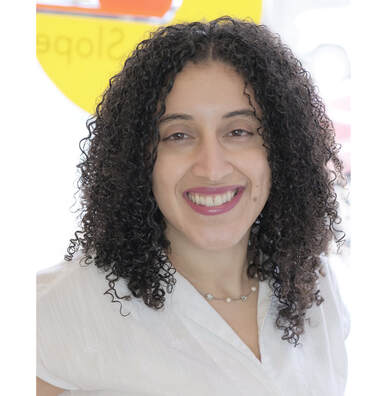
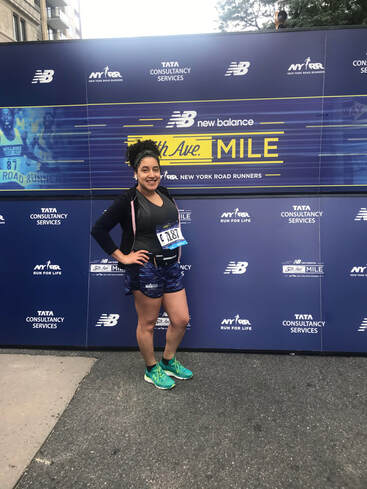

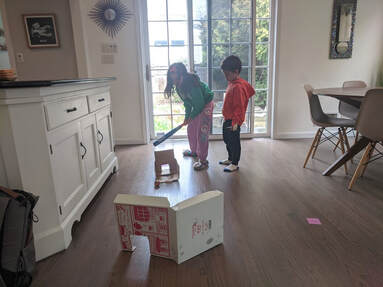
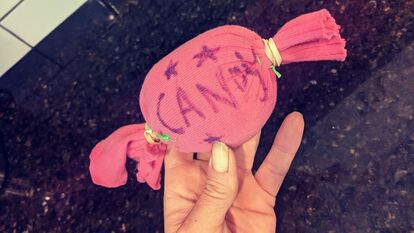
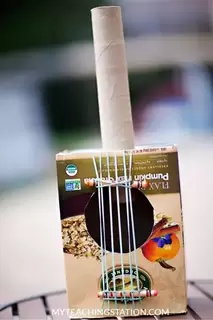
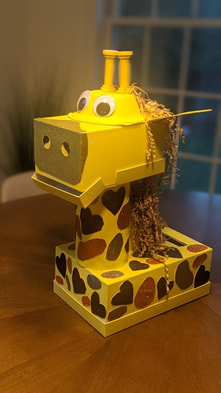
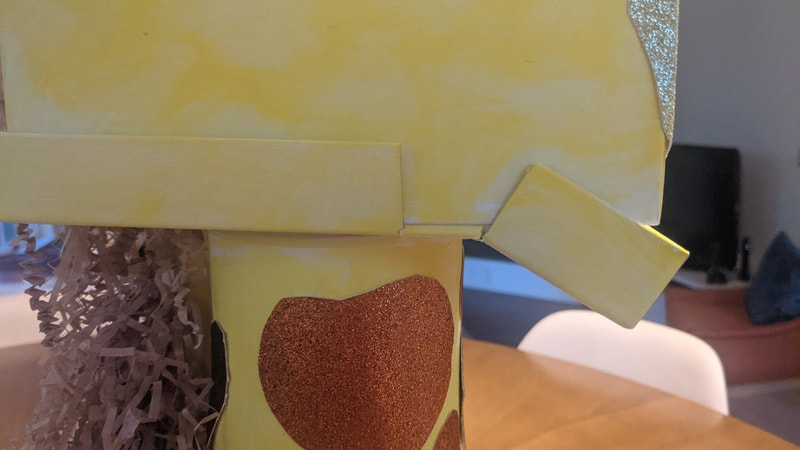
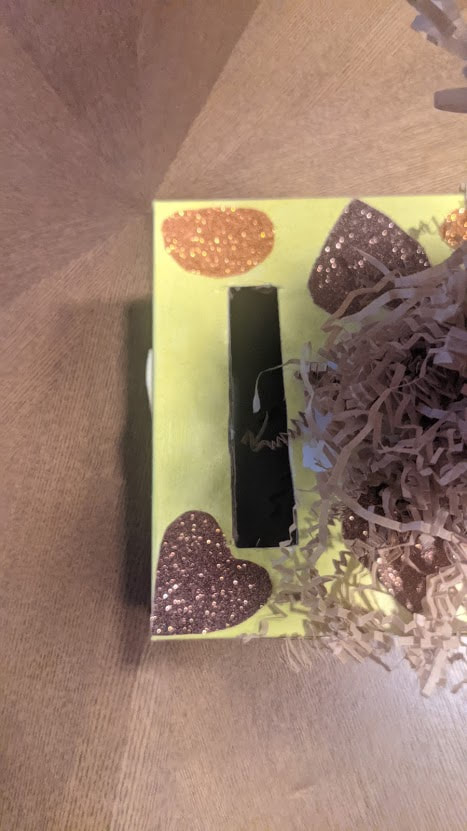
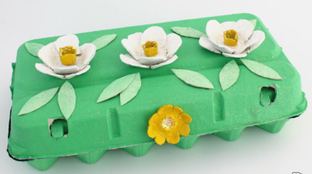


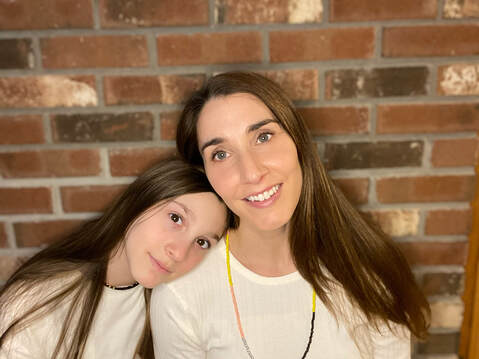
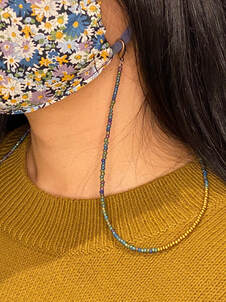
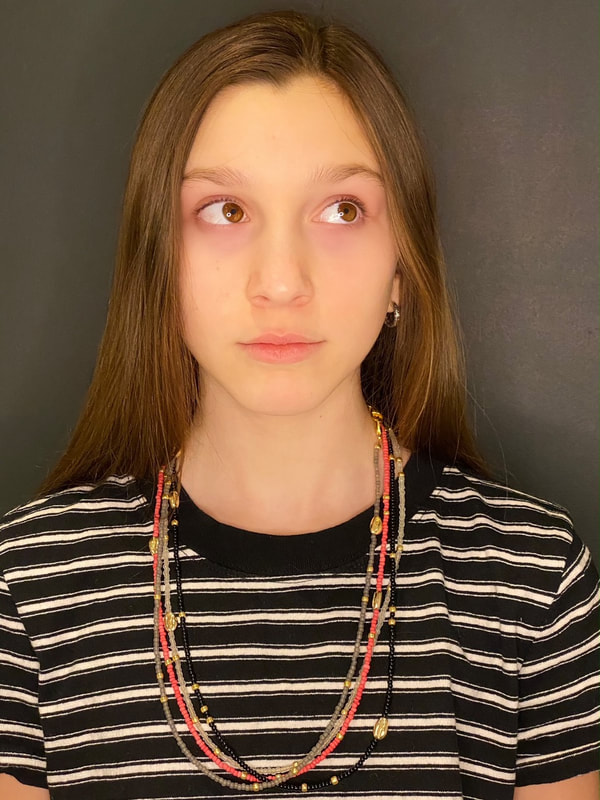
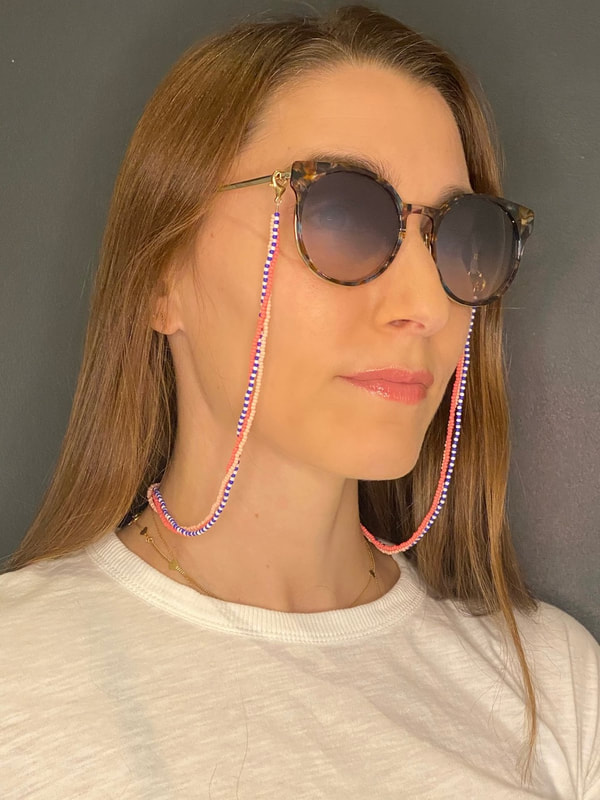
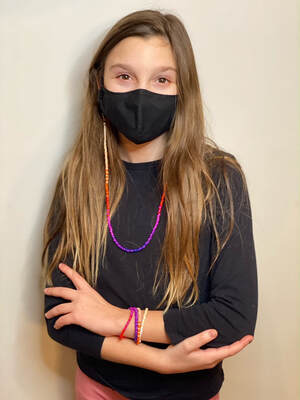
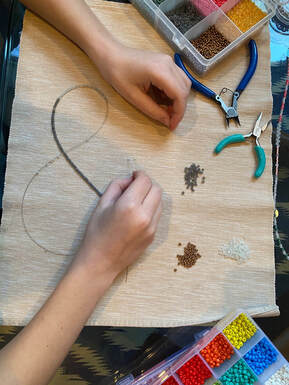
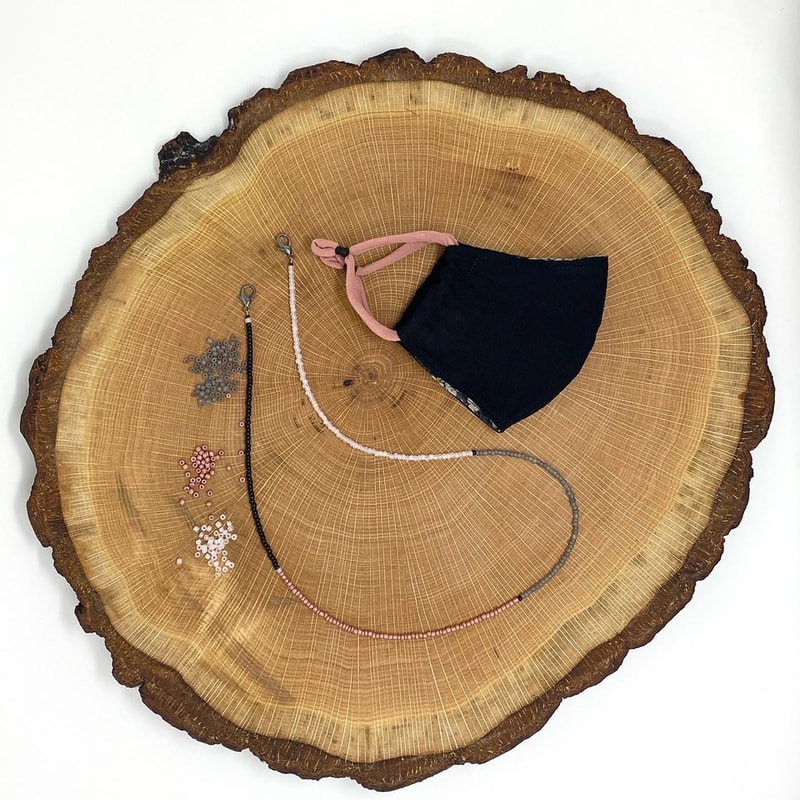
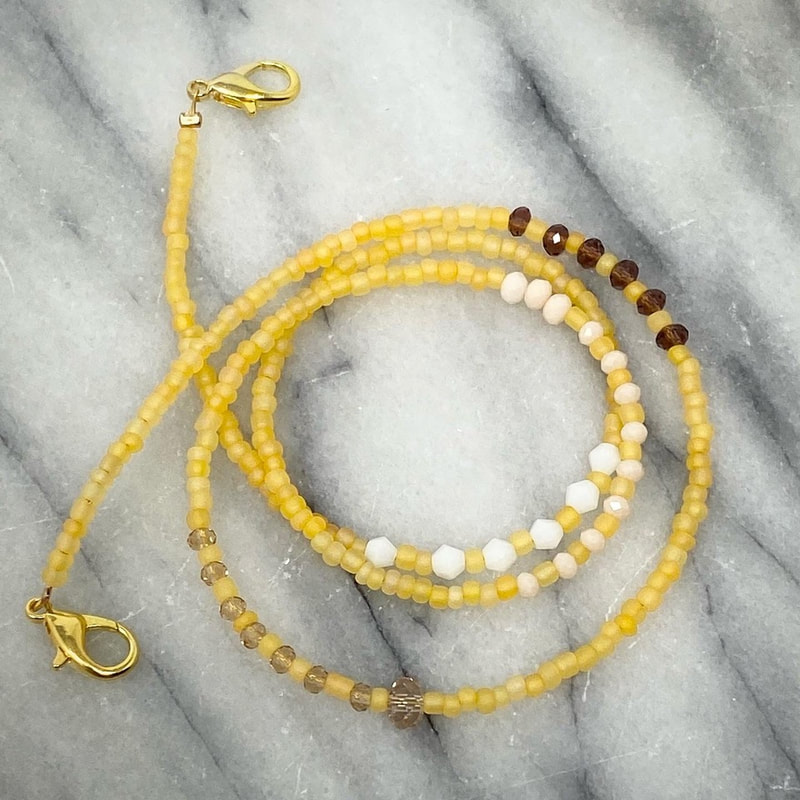
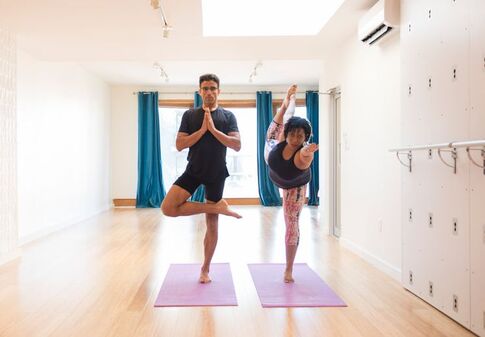
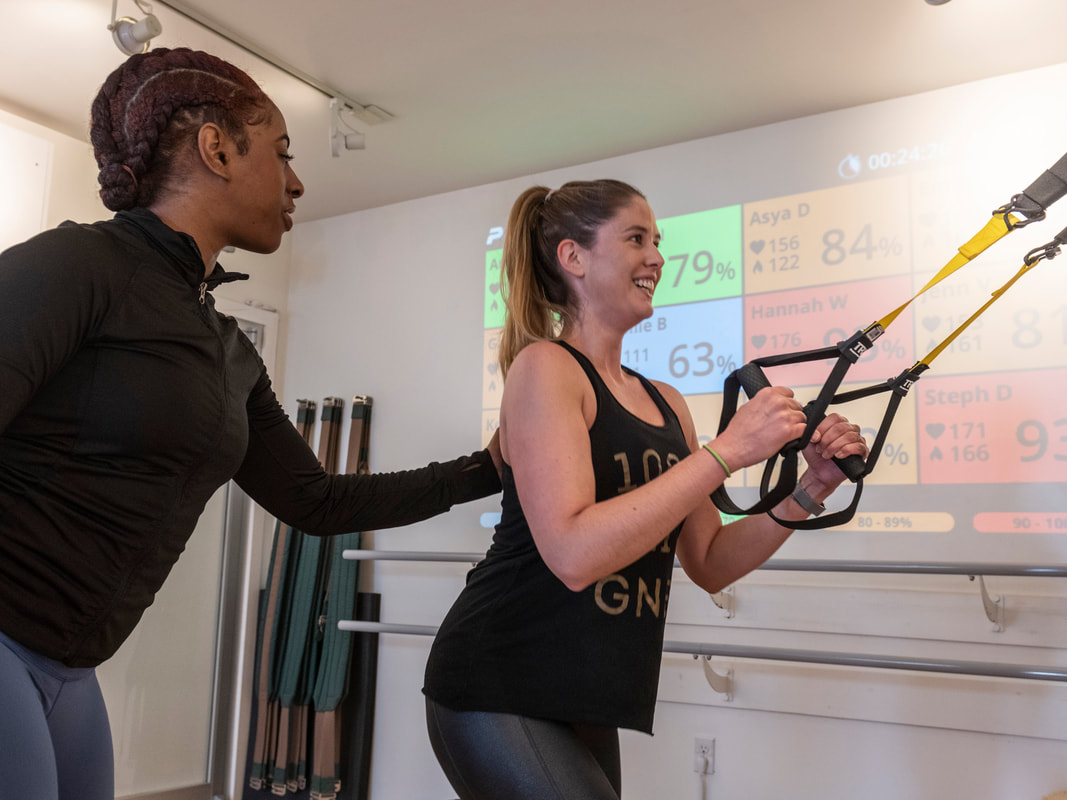

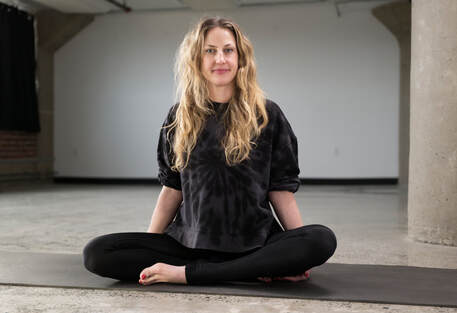
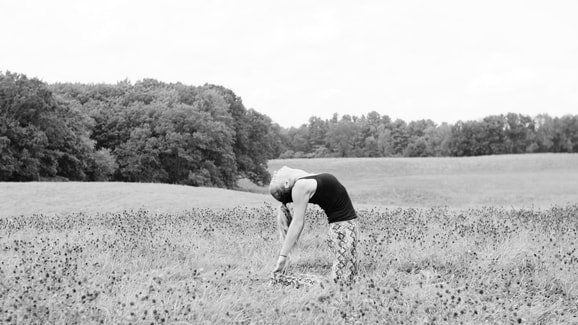
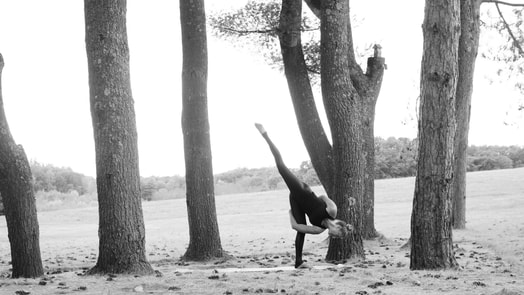
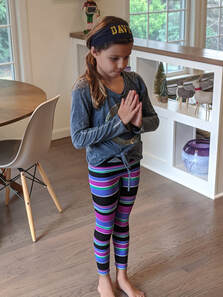
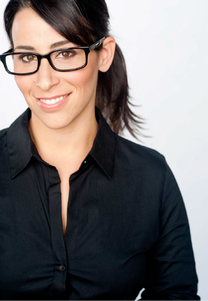
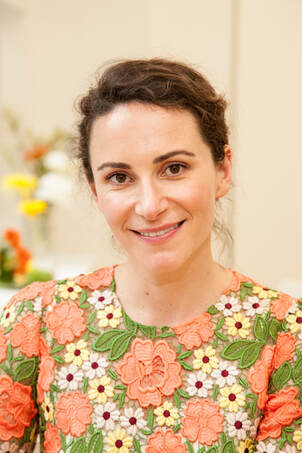
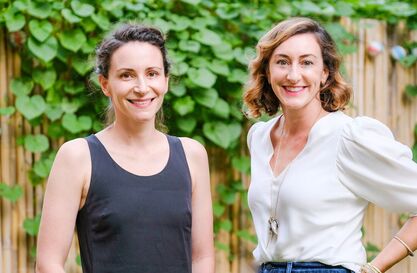
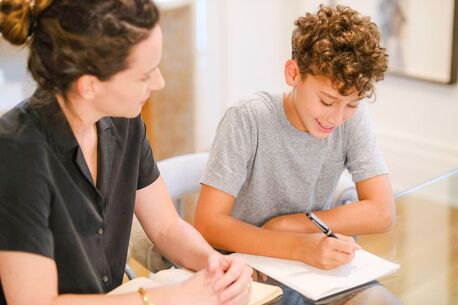

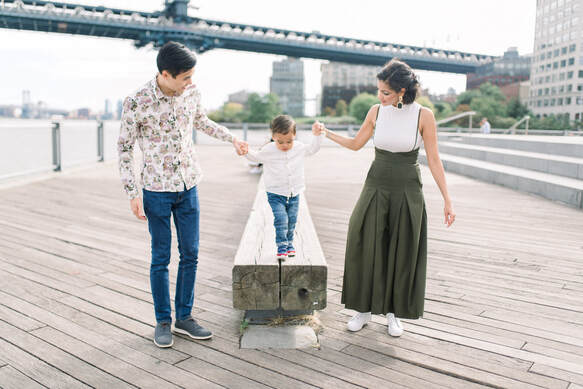
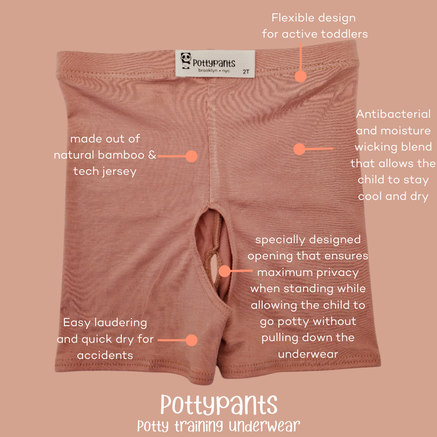

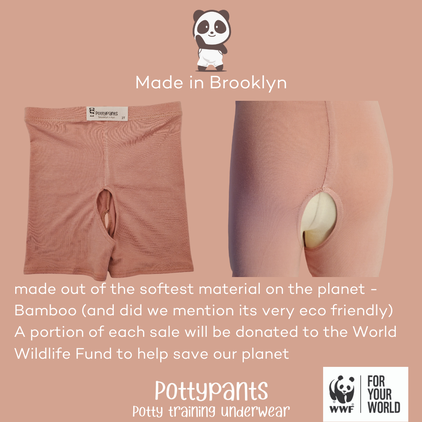
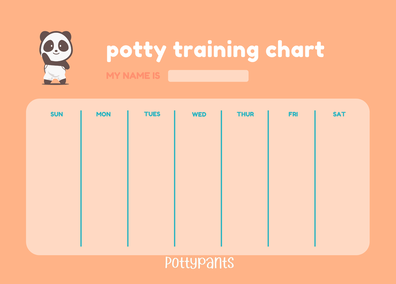
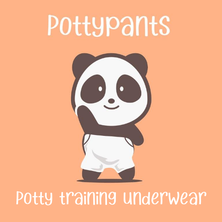
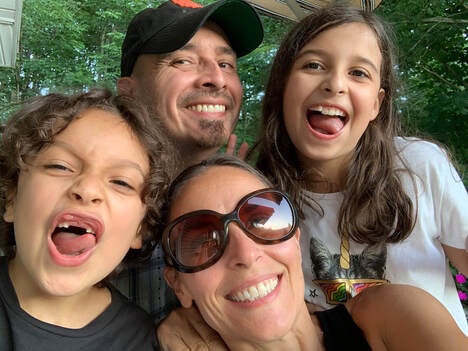
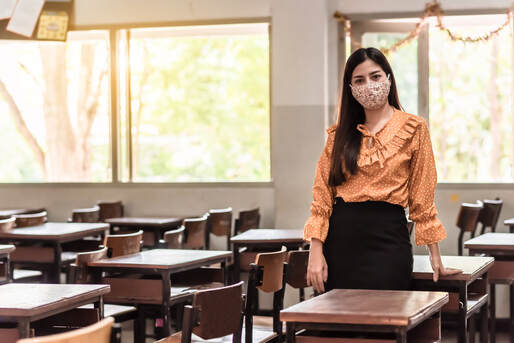
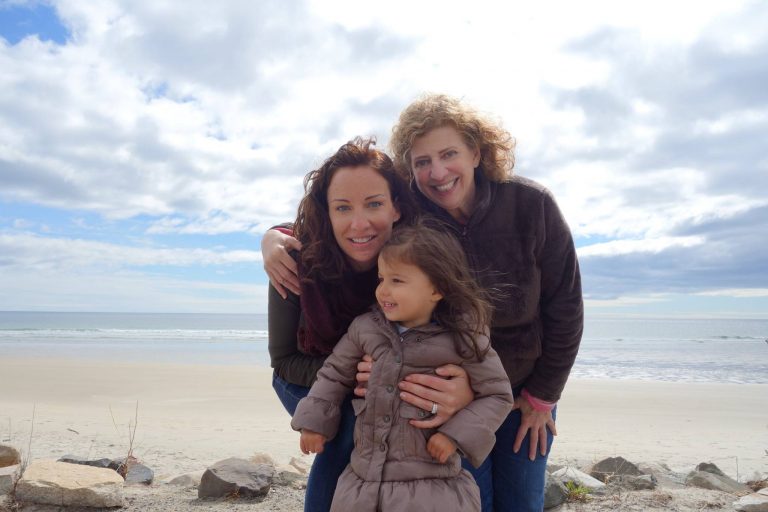
 RSS Feed
RSS Feed



